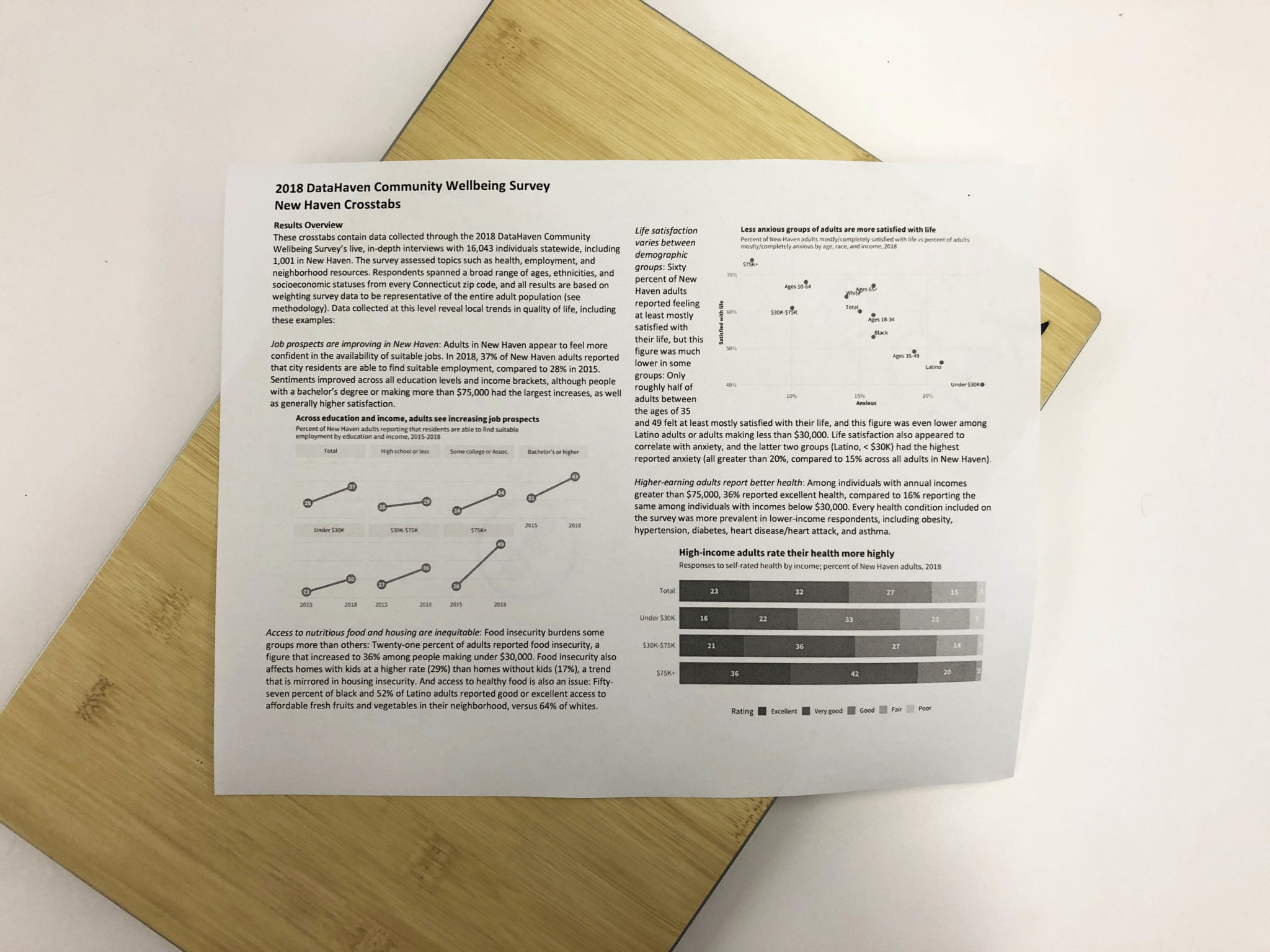
Eric Wang, Senior Photographer
Black and Latino residents of Connecticut have been disproportionately impacted by the COVID-19 pandemic and the subsequent recession, according to a new survey released on Sept. 16 by the New Haven-based non-profit data analytics organization, DataHaven.
The 2020 DataHaven Community Wellbeing Survey focused specifically on the well-being of Connecticut residents in the midst of the coronavirus pandemic. This year’s survey revealed that Connecticut’s Black and Latino residents have suffered from the highest rates of job loss, food insecurity and housing insecurity. Self-identifying members of these communities were also the most likely to report the loss of a family member or close friend due to the virus. The survey was conducted over the summer and received responses from over 1,000 state residents.
“This survey illustrates how the COVID-19 public health and economic crises have exacerbated these [racial, geographic and income] disparities, reinforcing the urgent need to address the decades of systemic factors, structural racism and disinvestment in many of our communities that created these inequities,” Jay Williams, president of the Hartford Foundation — a grantmaking organization — said in a Sept. 16 statement.
DataHaven Executive Director Mark Abraham told the News that some of the survey’s findings came as a surprise. Despite the pandemic and resulting economic contraction, 68 percent of adults in the state reported feeling “mostly or completely happy,” according to the findings. Abraham said that the relatively high level of happiness can be attributed to people finding the “silver linings [of the pandemic] in terms of their personal experience of being home.” He added that Connecticut Residents are “comparing themselves to their neighbors who have suffered more” during the pandemic. As a result, the average person who has remained employed and received stimulus checks has maintained a positive outlook, according to Abraham.
However, significant income disparities lie behind this statistic. Only 54 percent of state residents who earn $30,000 or less described themselves “mostly and completely happy.” In comparison, 76 percent of those earning more than $100,000 responded similarly.
The survey also focused on the extent to which the pandemic’s effects on employment have unevenly fallen on Black and Latino communities.
Since February 2020, 22 percent of Black respondents and 37 percent for Latino respondents reported that at least one member of their household had lost their job. Among white respondents, the rate was 18 percent.
“DataHaven’s survey findings corroborate conclusions drawn from other sources, confirming the disproportionate burden of COVID-19 on minority communities,” wrote Dean of the Yale School of Public Health Sten Vermund in a Sept. 16 statement.
The survey also showed that Black and Latino communities in Connecticut experienced significantly higher levels of food insecurity. The rate among white adults was 9 percent, compared to 22 percent and 27 percent for Black and Latino respondents, respectively.
Racial disparities also appeared in rates of statewide housing insecurity — which DataHaven defines as not having “enough money to provide adequate shelter or housing” for an individual or their family. Seven percent of white respondents expressed concerns over housing insecurity. That rate went up to 10 percent for Black respondents and 21 percent for Latino respondents. Abraham told the News that the economic shockwaves from the pandemic have affected residents throughout the state over the past six to 12 months.
The survey also corroborated the high rates of infection and mortality within the state’s Black and Latino communities. Among these respondents, 42 percent and 46 percent, respectively, reported having a close friend or family member test positive for COVID-19. This number fell to 30 percent among white respondents. A death disparity also exists along racial lines, with 12 percent of white respondents reporting the loss of a close friend or family member, compared to 15 percent of Latino respondents and 20 percent of Black respondents.
The higher death rates among Blacks and Latinos corresponds with increased caution among those populations, with both groups reporting higher rates of mask-wearing and concern over exposure to the virus. Ninety-five percent of Blacks and 82 percent of Latinos reported mask-wearing, compared to 80 percent of whites. Sixty-one percent of Black respondents and 24 percent of white respondents reported being ‘very concerned’ about the virus.
Many of the survey’s respondents expressed a lack of trust in the federal government’s ability to look out for the best interests of their family. Only 43 percent of respondents reported a “great deal” or a “fair amount” of trust. However, trust in local and state governments has remained much higher, both at 72 percent.
DataHaven was founded in 1992.
Data visualizations for this project were created by Darwin Do.
Philip Mousavizadeh | philip.mousavizadeh@yale.edu







